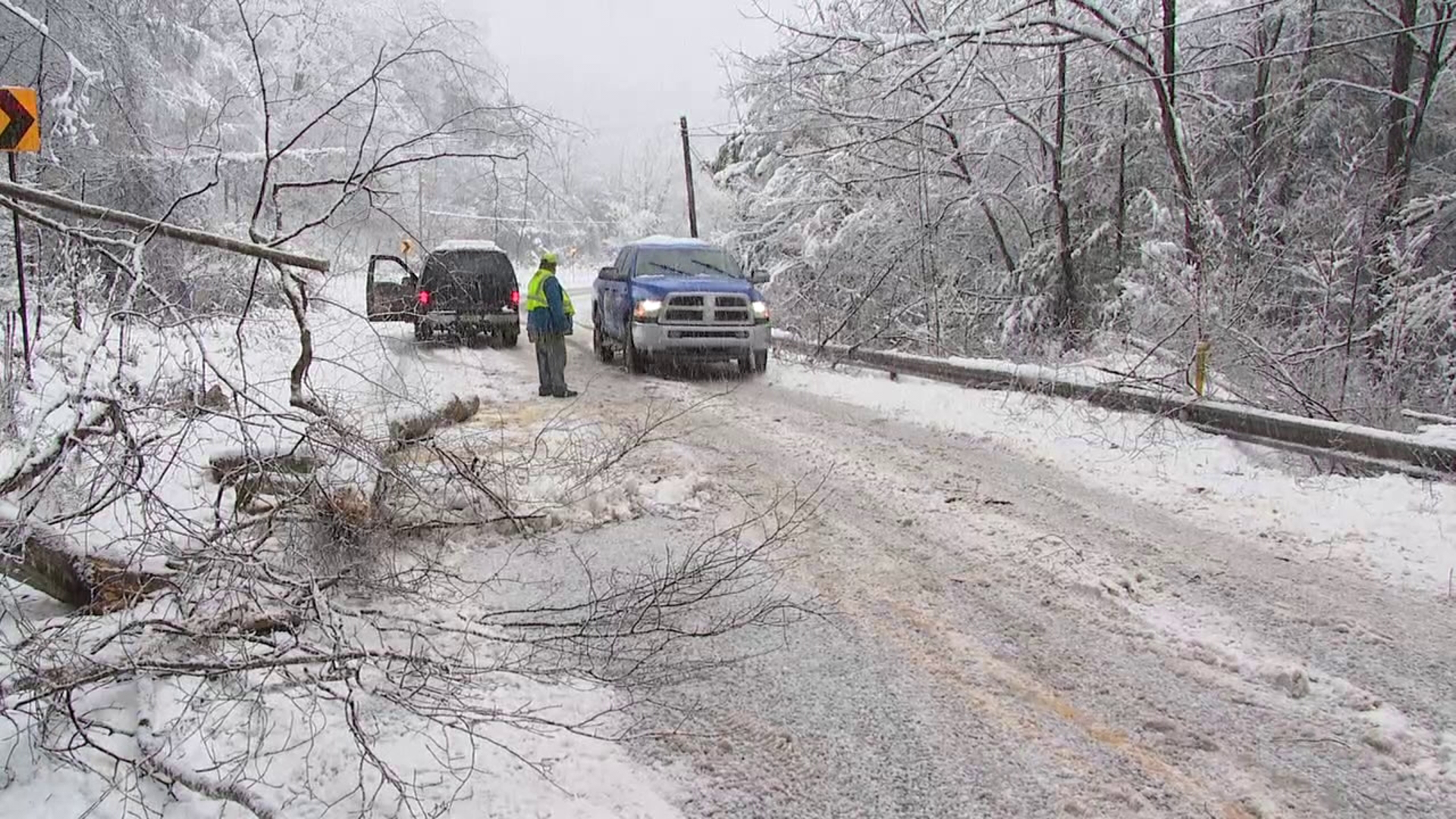PENNSYLVANIA, USA — You have probably heard us say it hundreds of times: sleet pings and freezing rain clings. It is a simple way to remember the difference between these two wintry types of precipitation. Sleet and freezing rain occur for different reasons but by a similar process. Sleet forms when frozen precipitation melts in warm air above the surface. Then that raindrop refreezes in a layer of colder air before it hits the ground.
Freezing rain, on the other hand, is frozen precipitation that melts to a raindrop, but that raindrop does not refreeze again until it hits the surface.
Meteorologists with the National Weather Service say our area is one of the most prone in the country to this wintry weather.
"What ends up happening in Northeast Pennsylvania and other parts of Central Pennsylvania as well, is a lot of times the cold air really buries itself or locks in east of the Appalachian Mountains," said Dave Nicosia, Meteorologist in Charge at the National Weather Service, Binghamton. "So a lot of times these warm air masses will come in from the Ohio Valley and the cold air stays near the ground," he said.
Both sleet and freezing rain can be more dangerous than snow because these involve ice. And it does not take a lot of ice for things to get slippery. On the ground, sleet falls as little ice pellets, but freezing rain will create a solid sheet of ice, so freezing rain is considered the most dangerous type of winter weather.
"As soon as it gets above freezing it actually gets worse if the road is not treated. If you think about it, if you have ice on a road, and then it starts to melt, now you have a film of water on top of the ice which makes it even more slippery," Nicosia explained.
Meteorologists with the National Weather Service say our area's topography is the perfect storm for dangerous travel during the winter months.
"Sometimes the Valleys will warm up first and the Poconos will stay a little bit colder, so you may be driving on one of the Interstates or the Turnpike and the roads are fine, and then you go up in the hills and all of the sudden there's ice," Nicosia said.
Which is why even if it is not a big storm, meteorologists will issue Winter Weather Advisories when there's a wintry mix of precipitation in the forecast.



